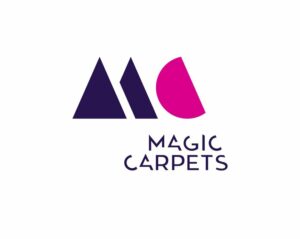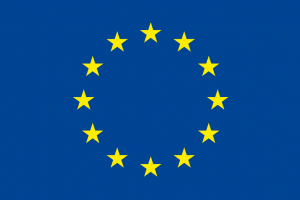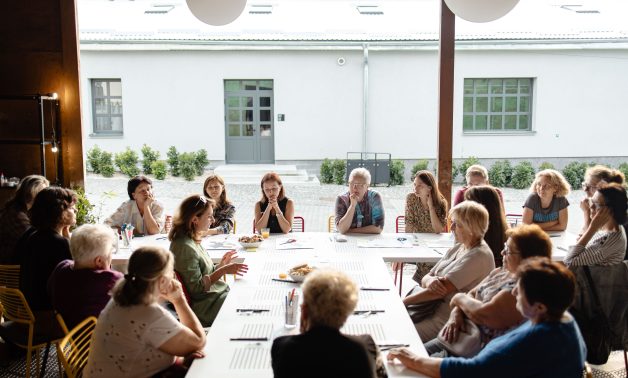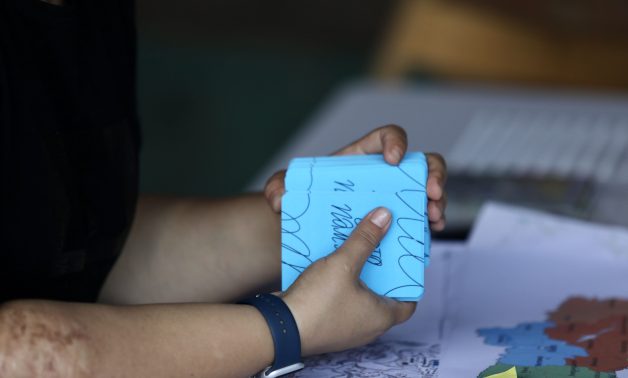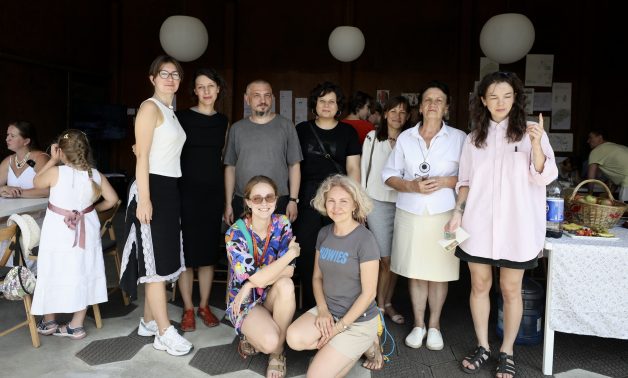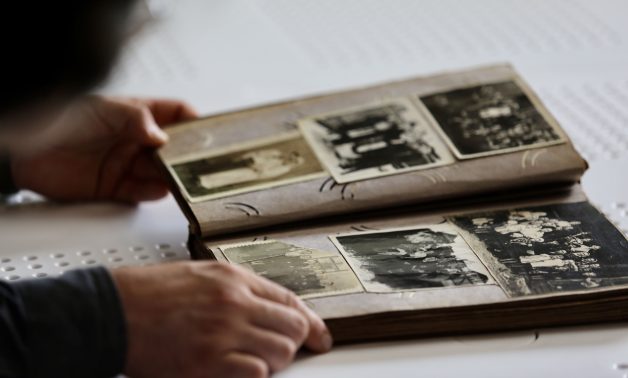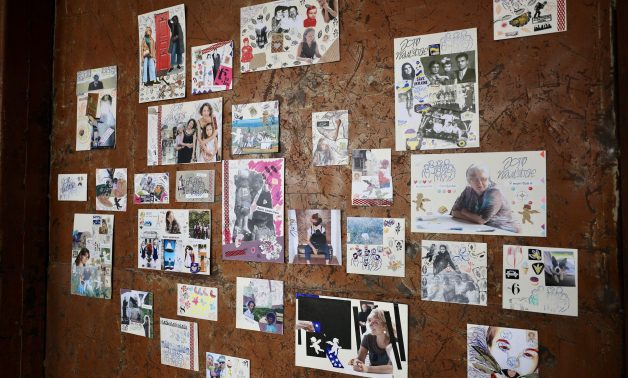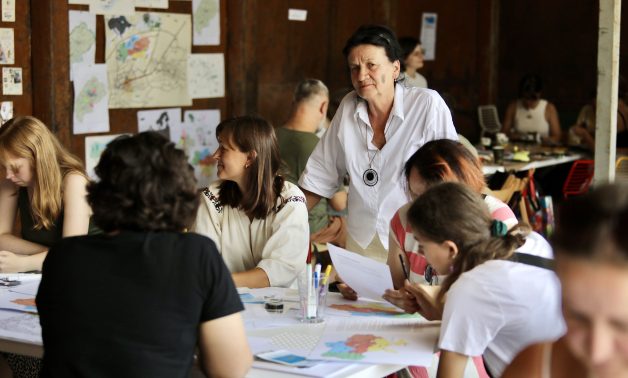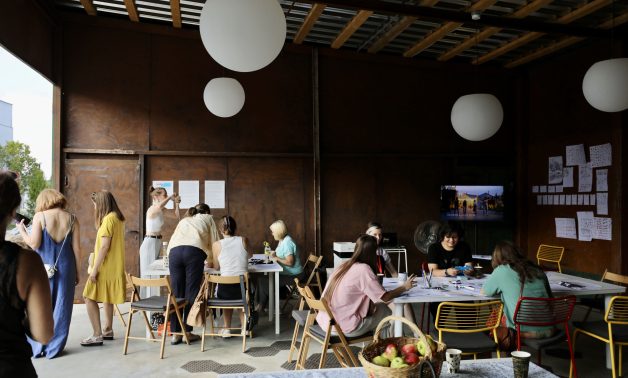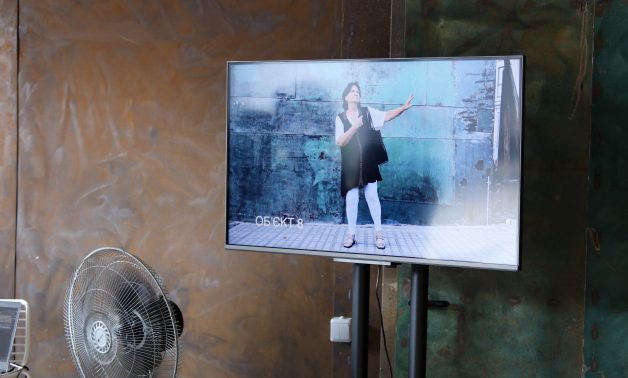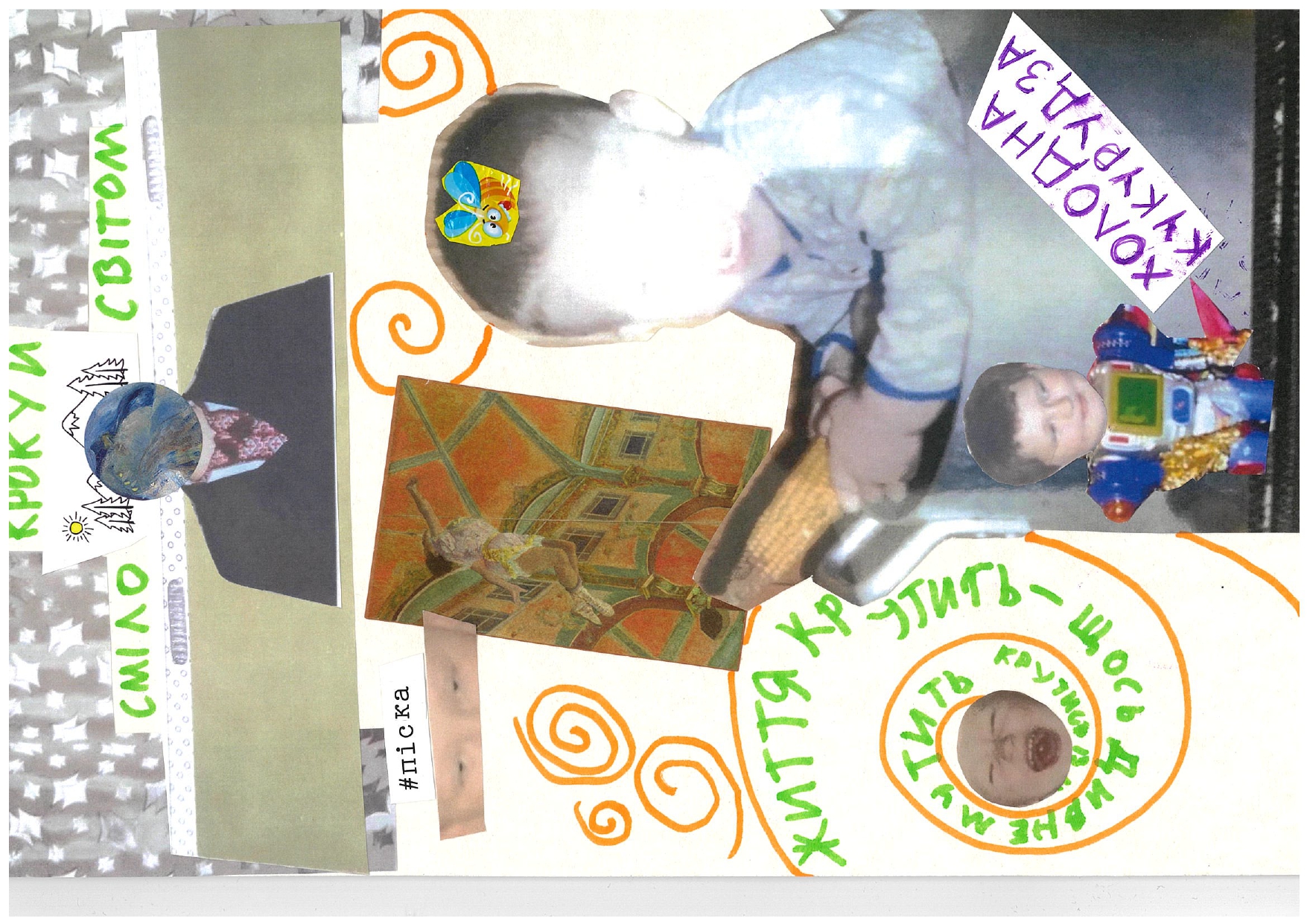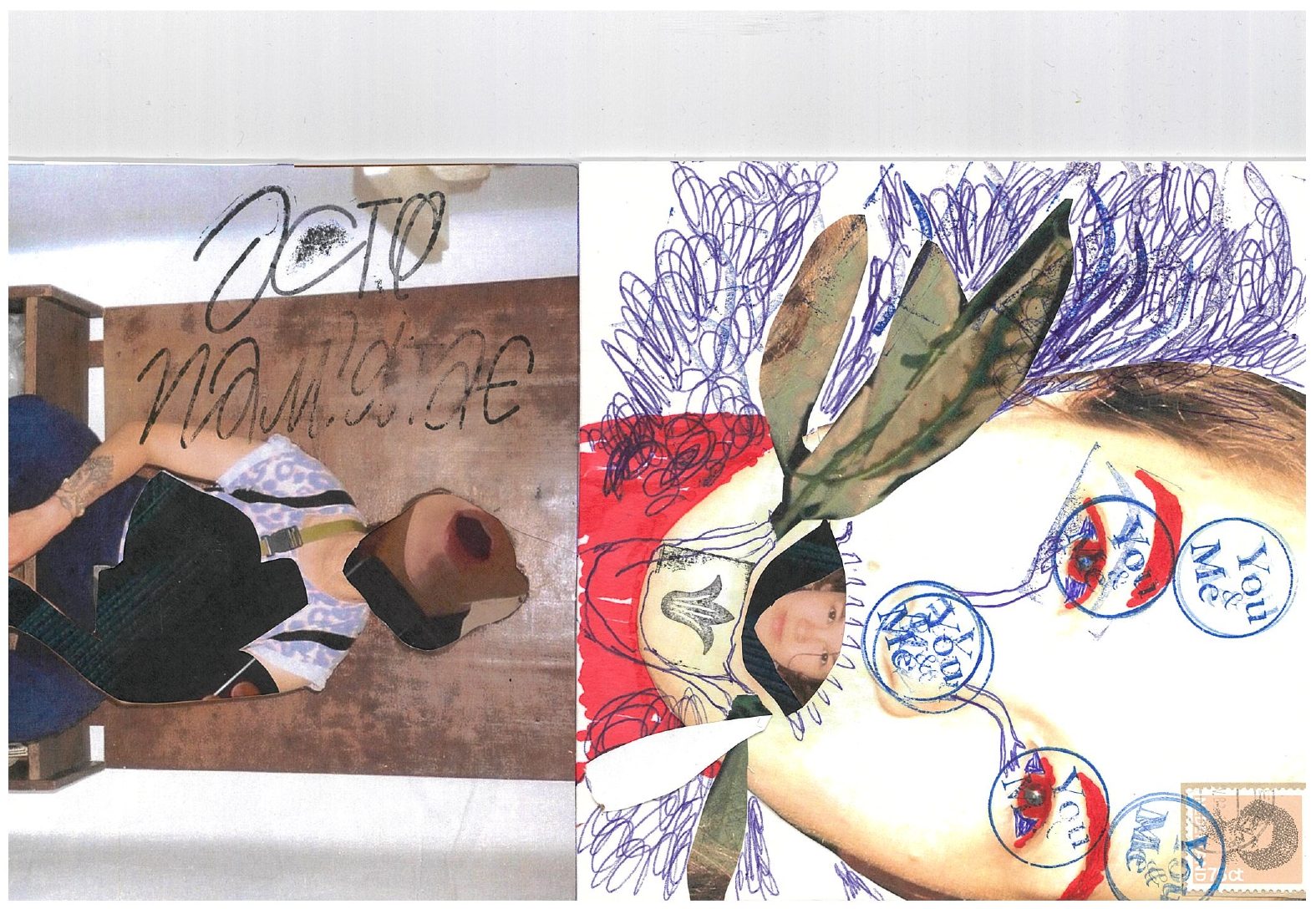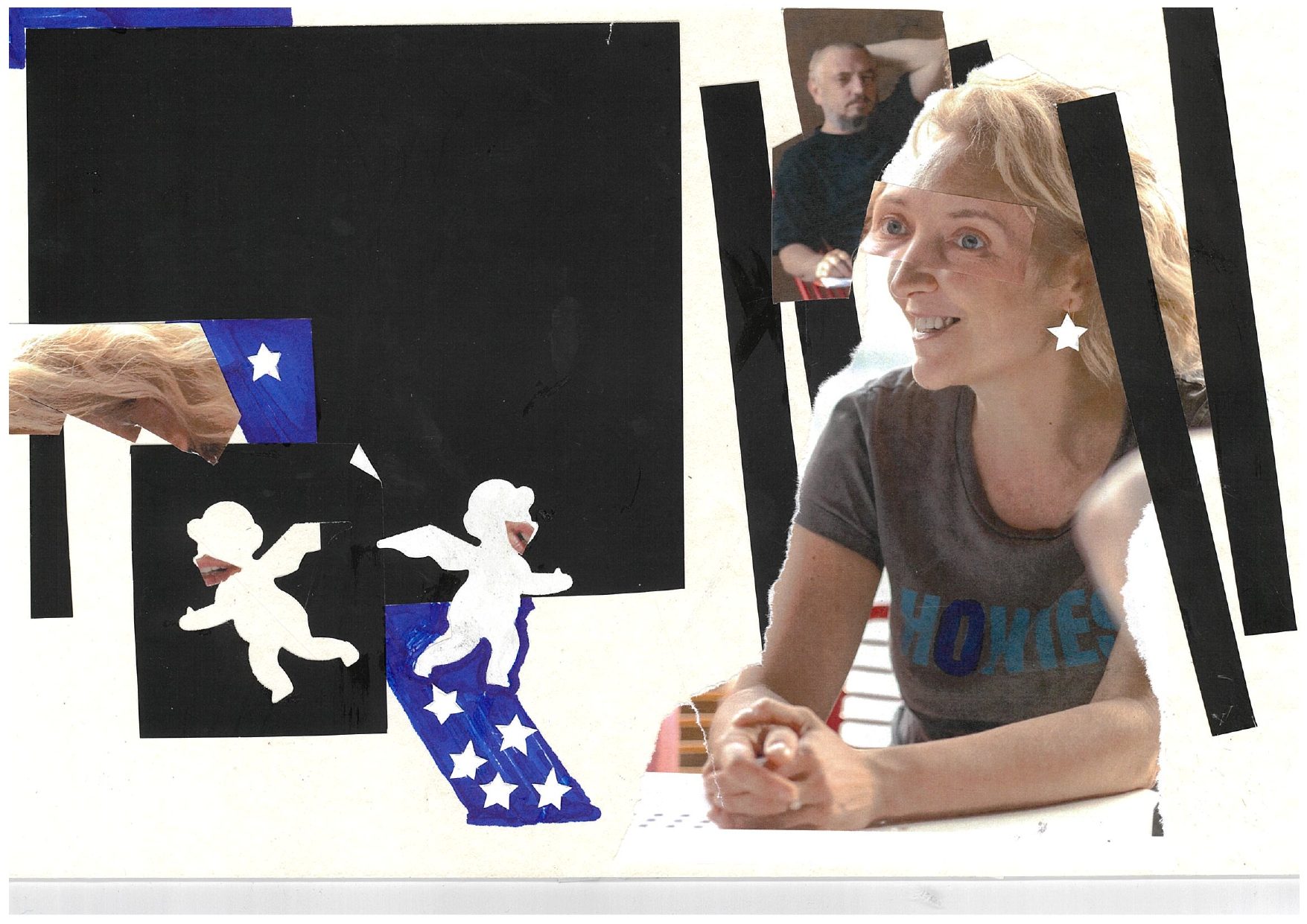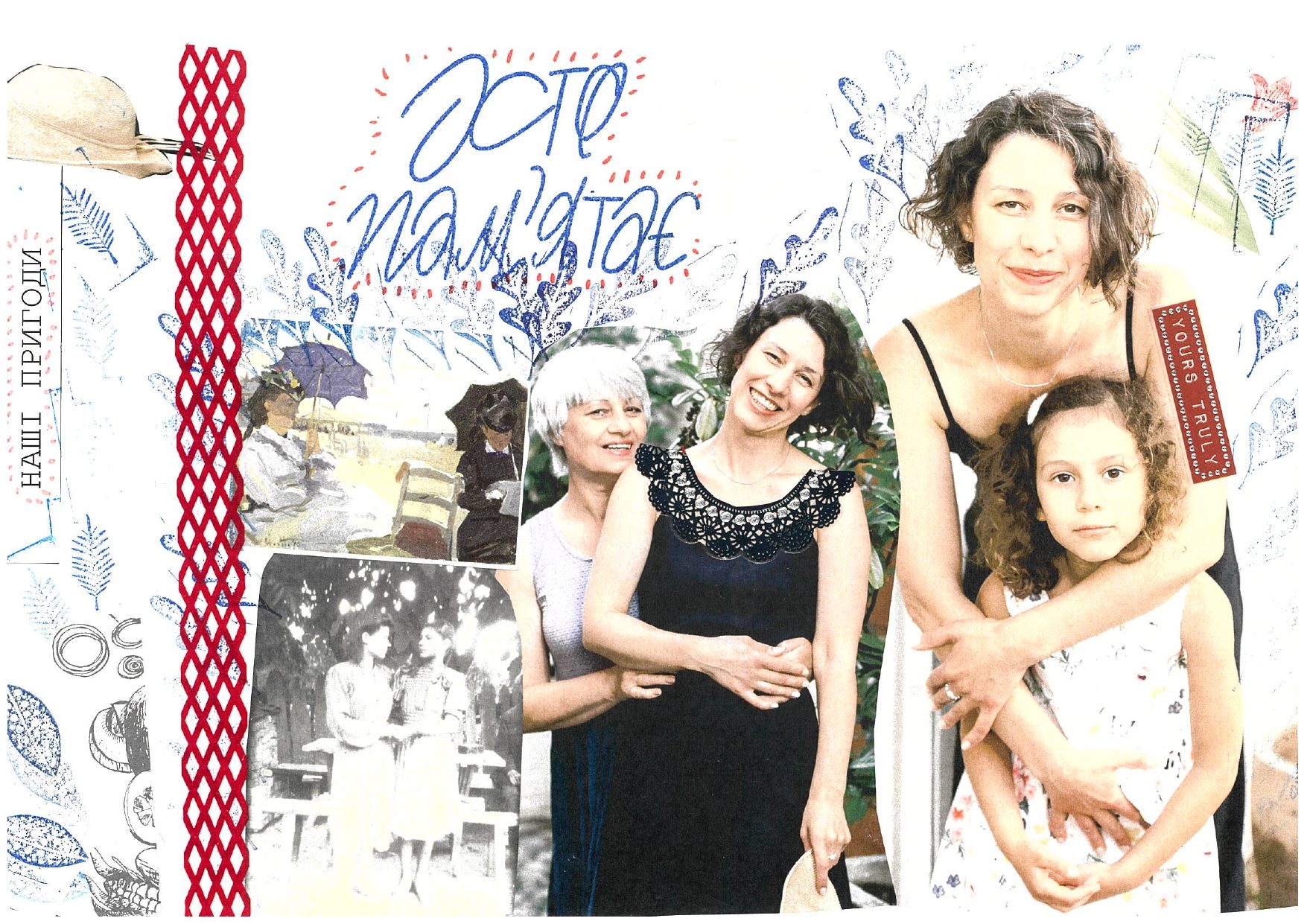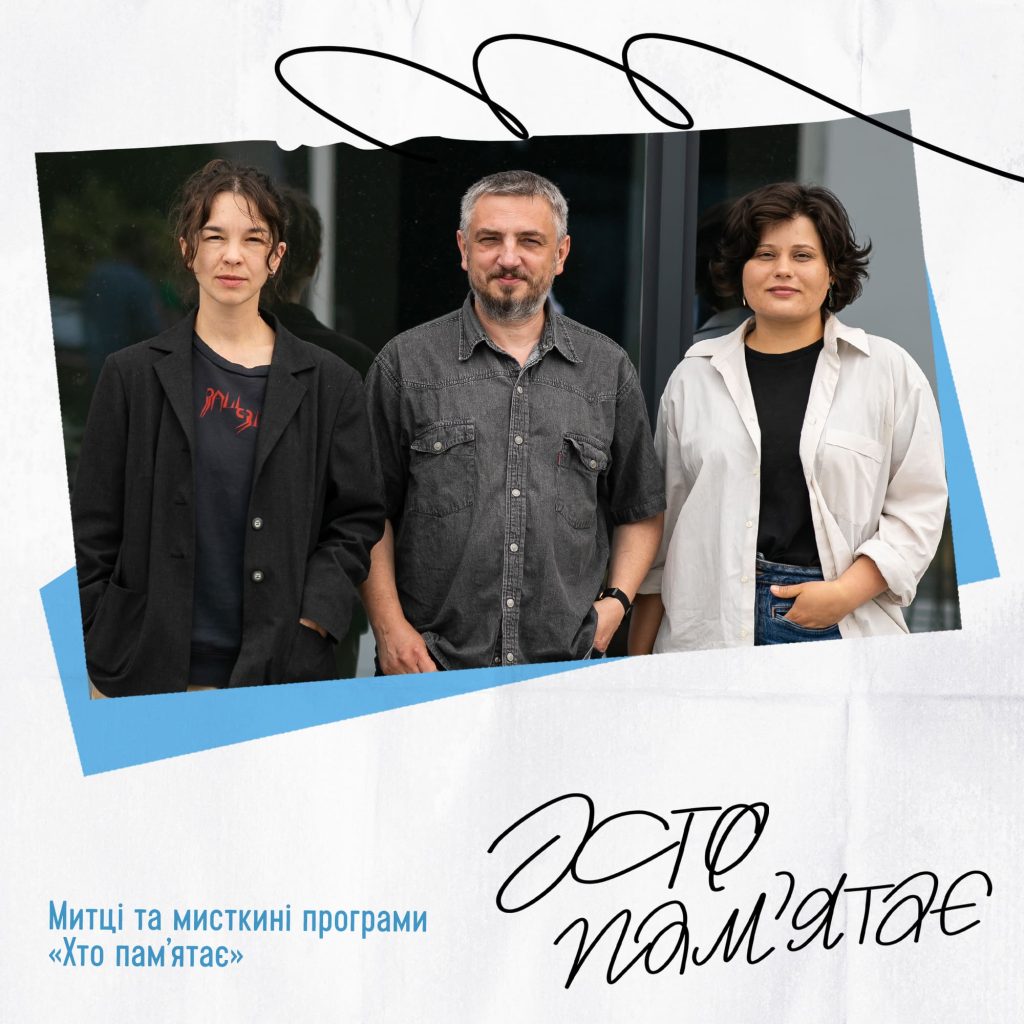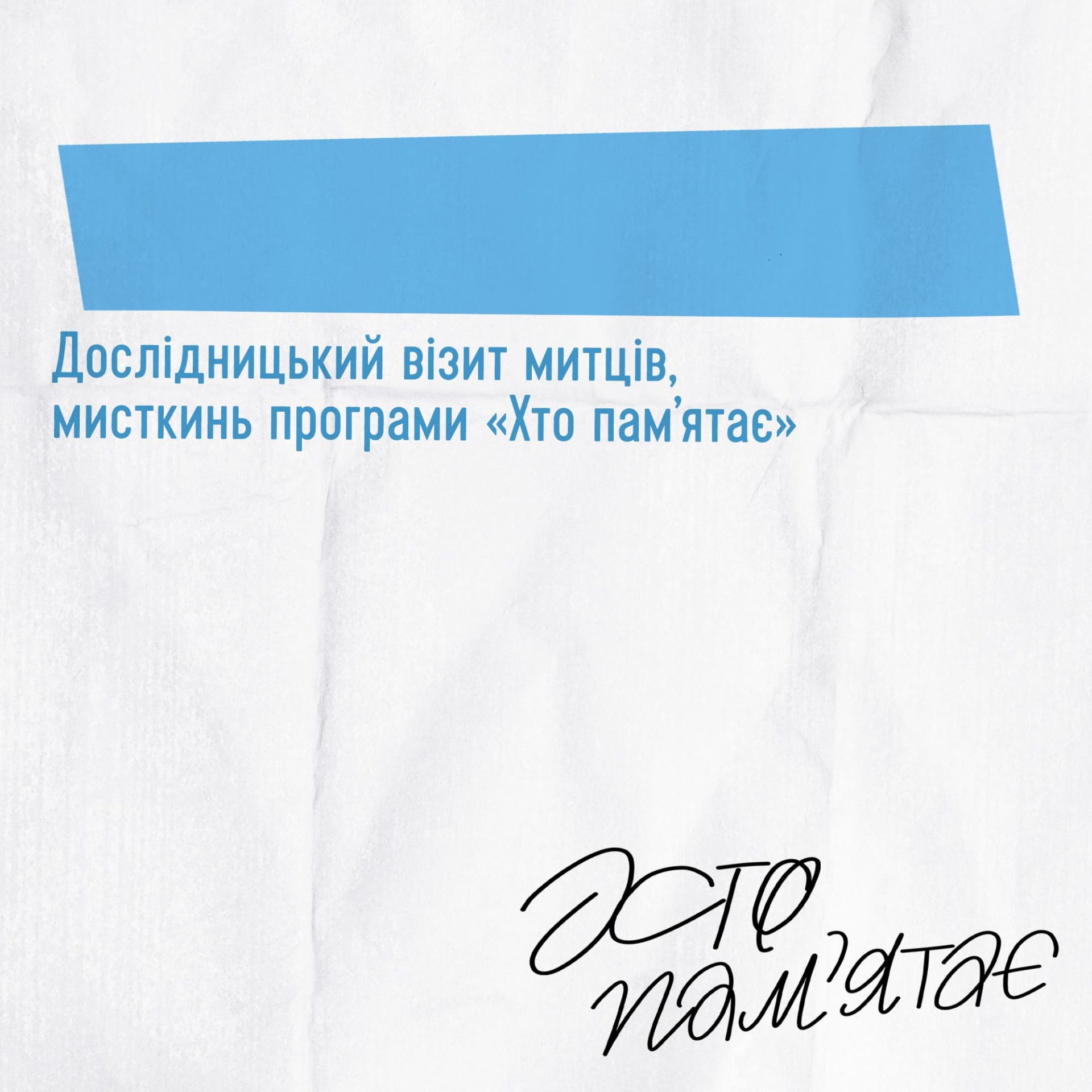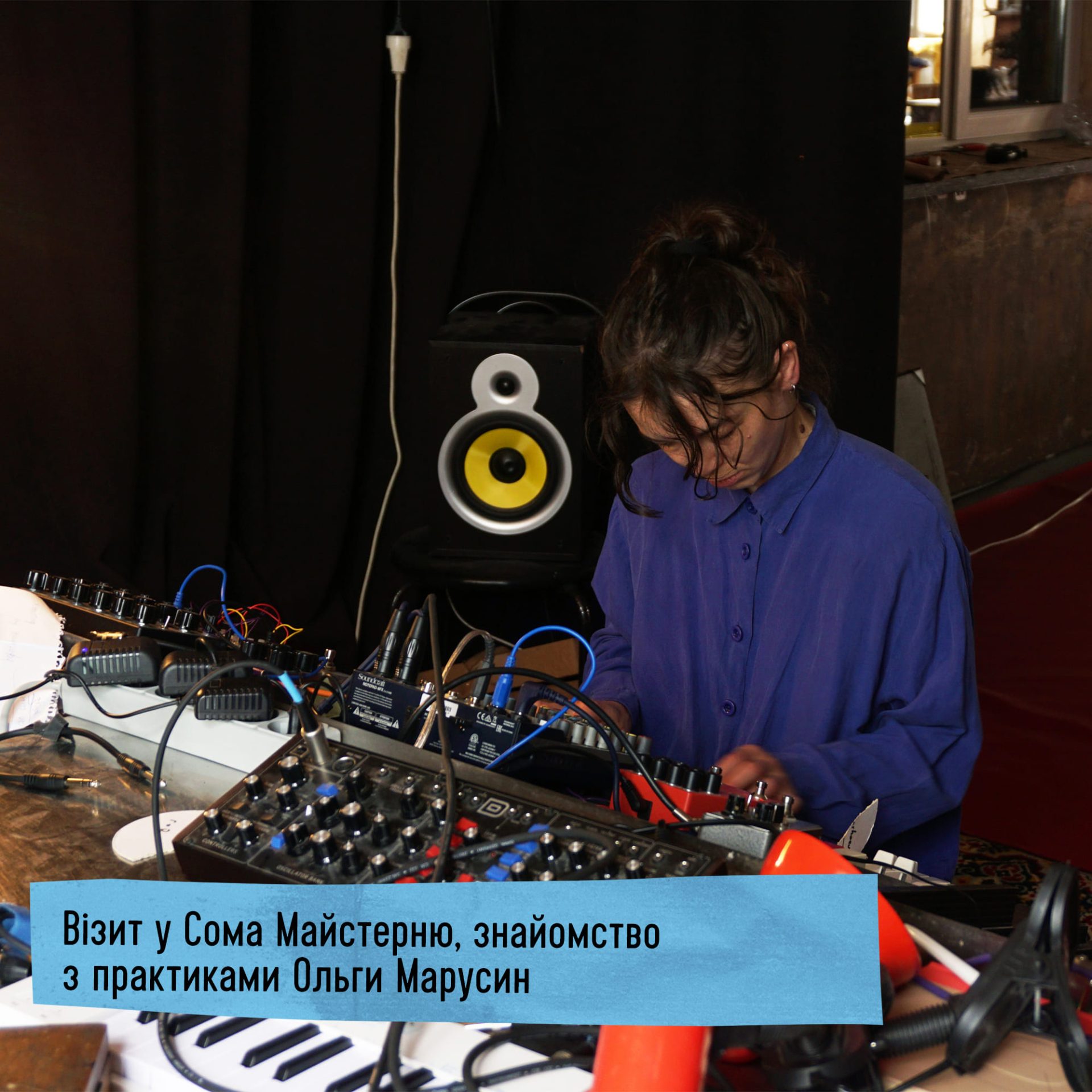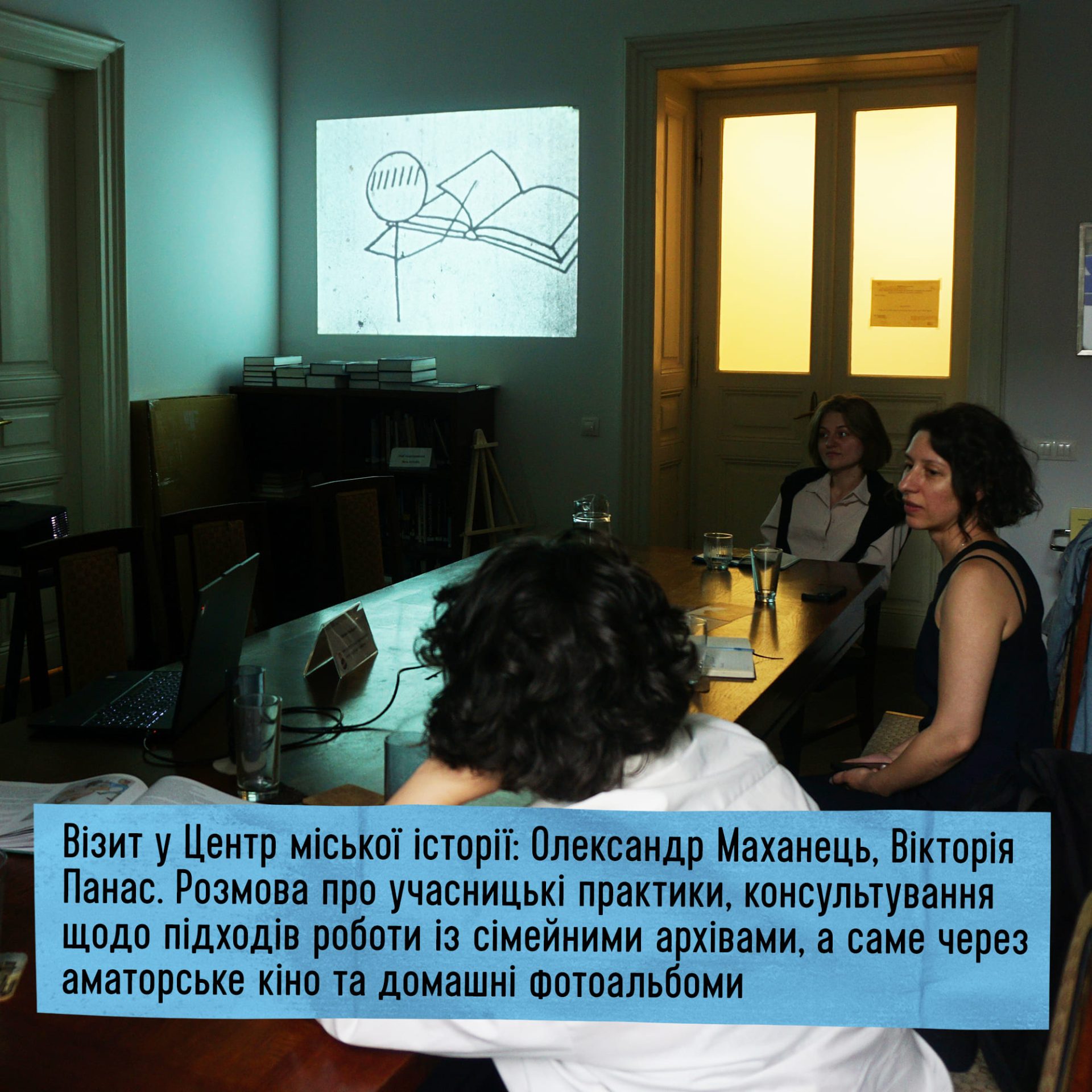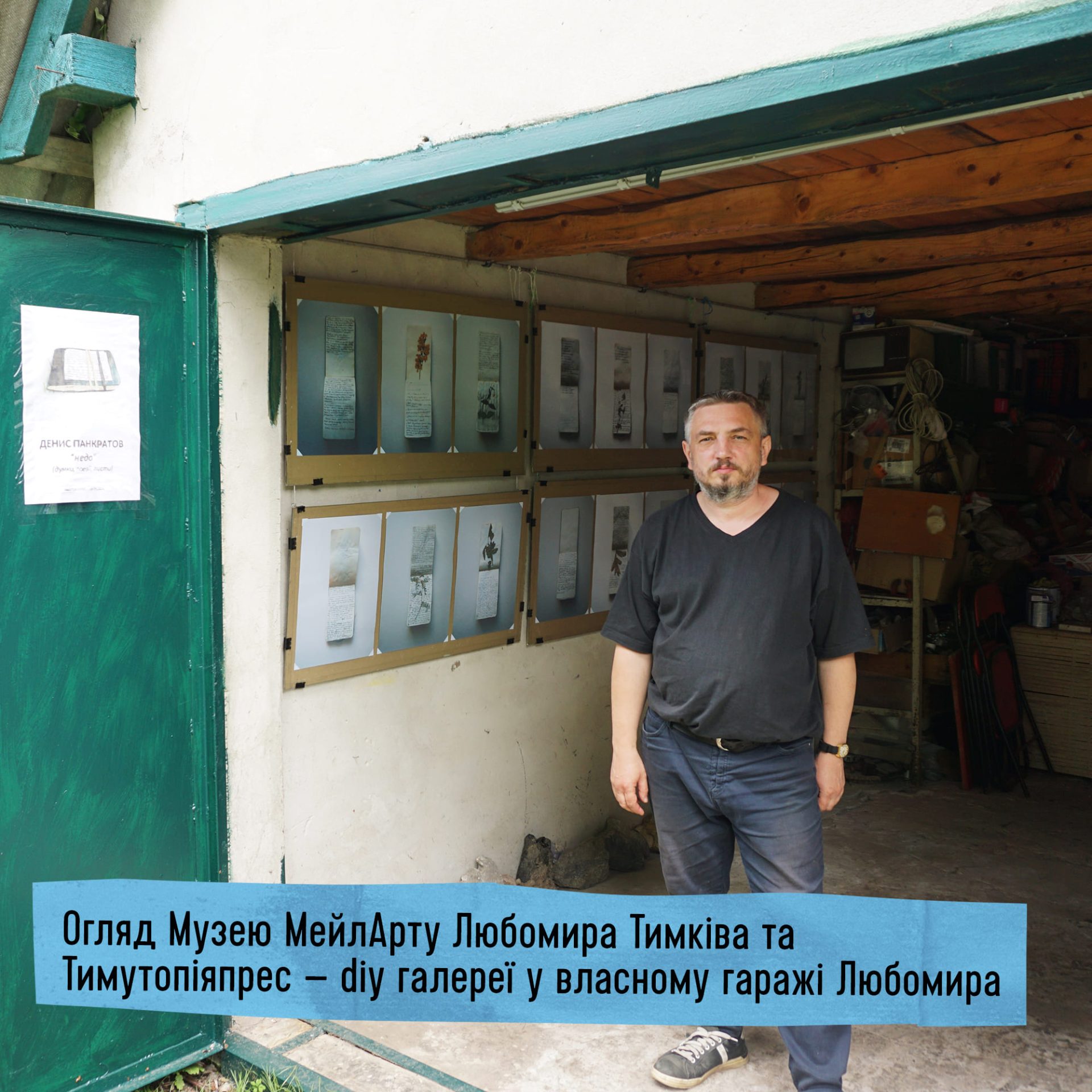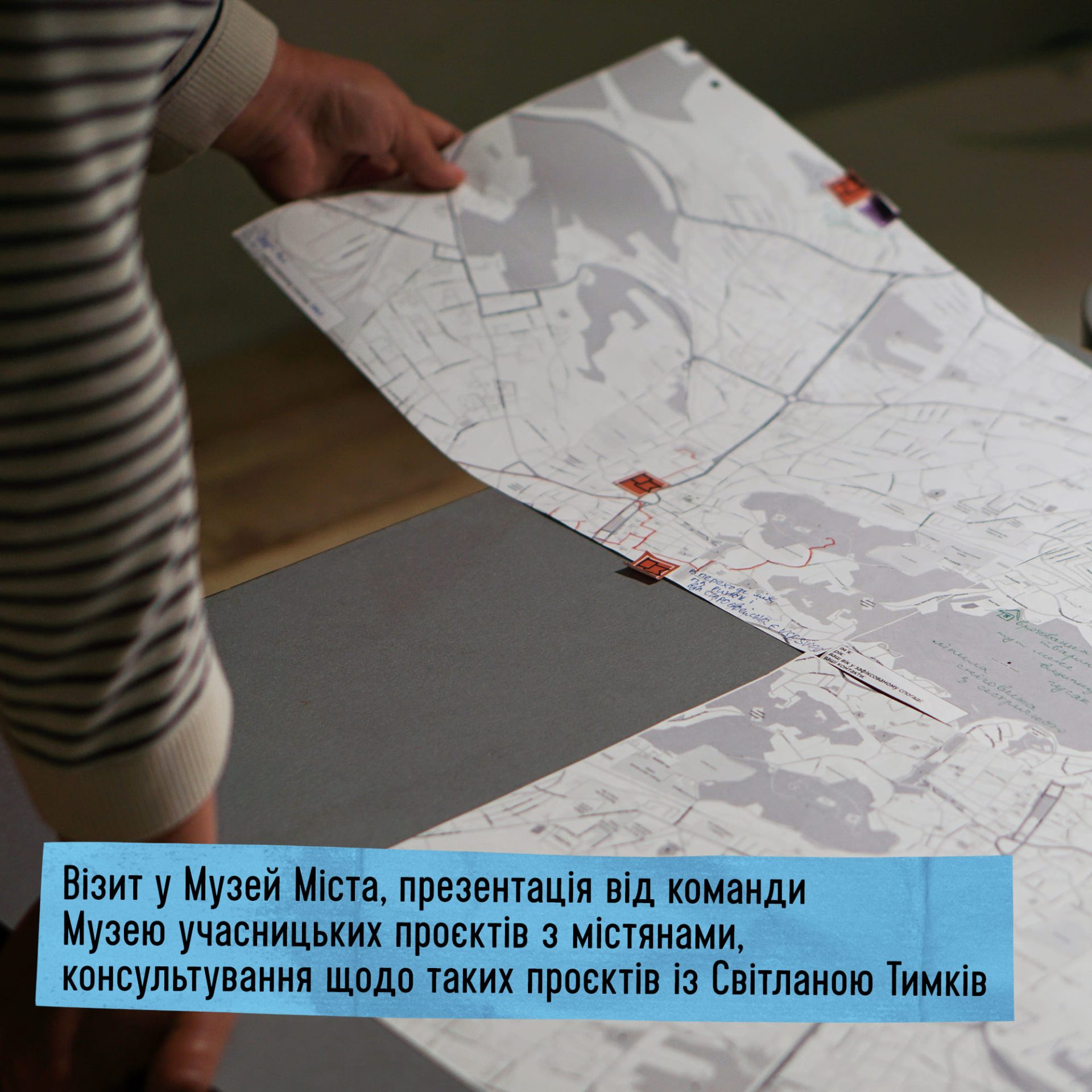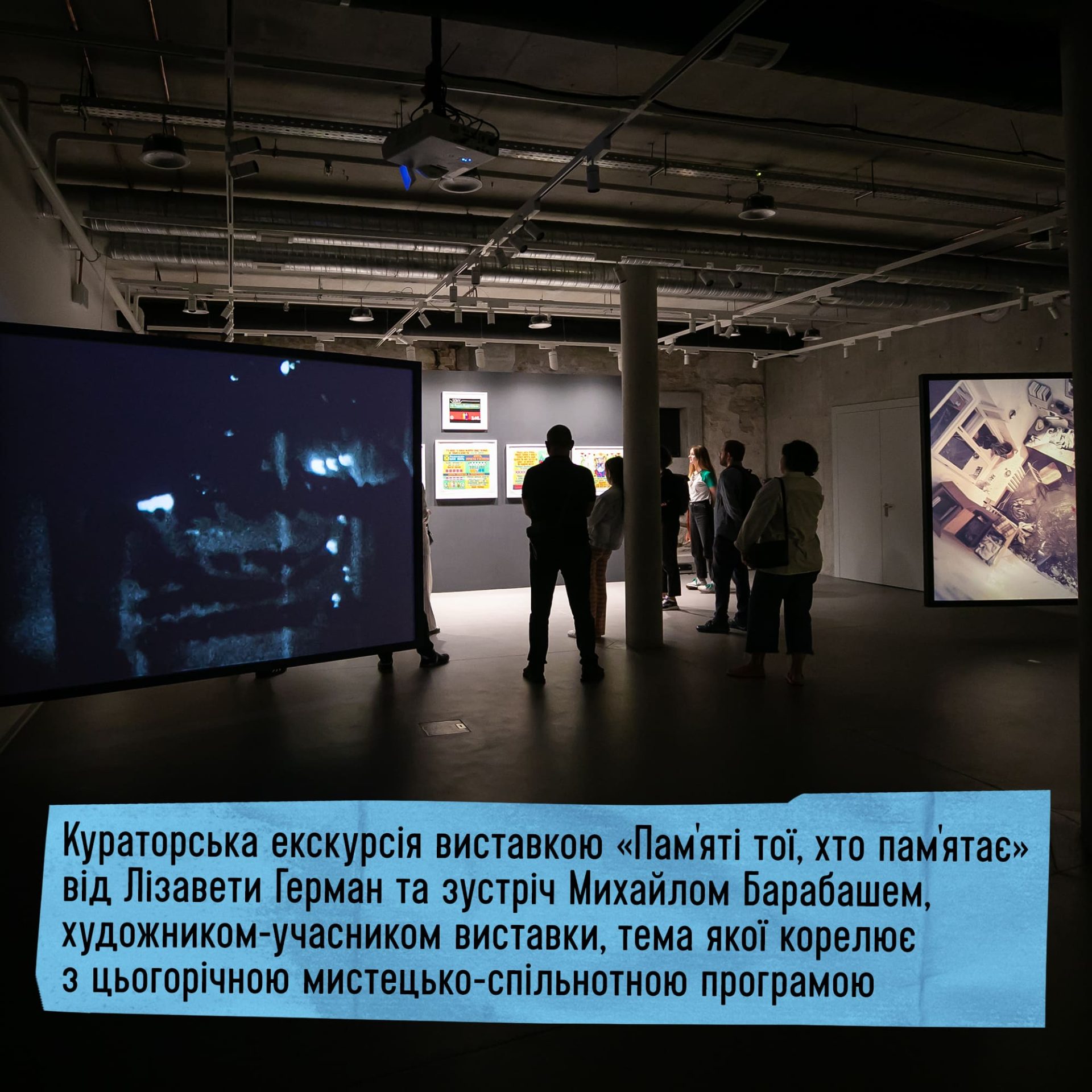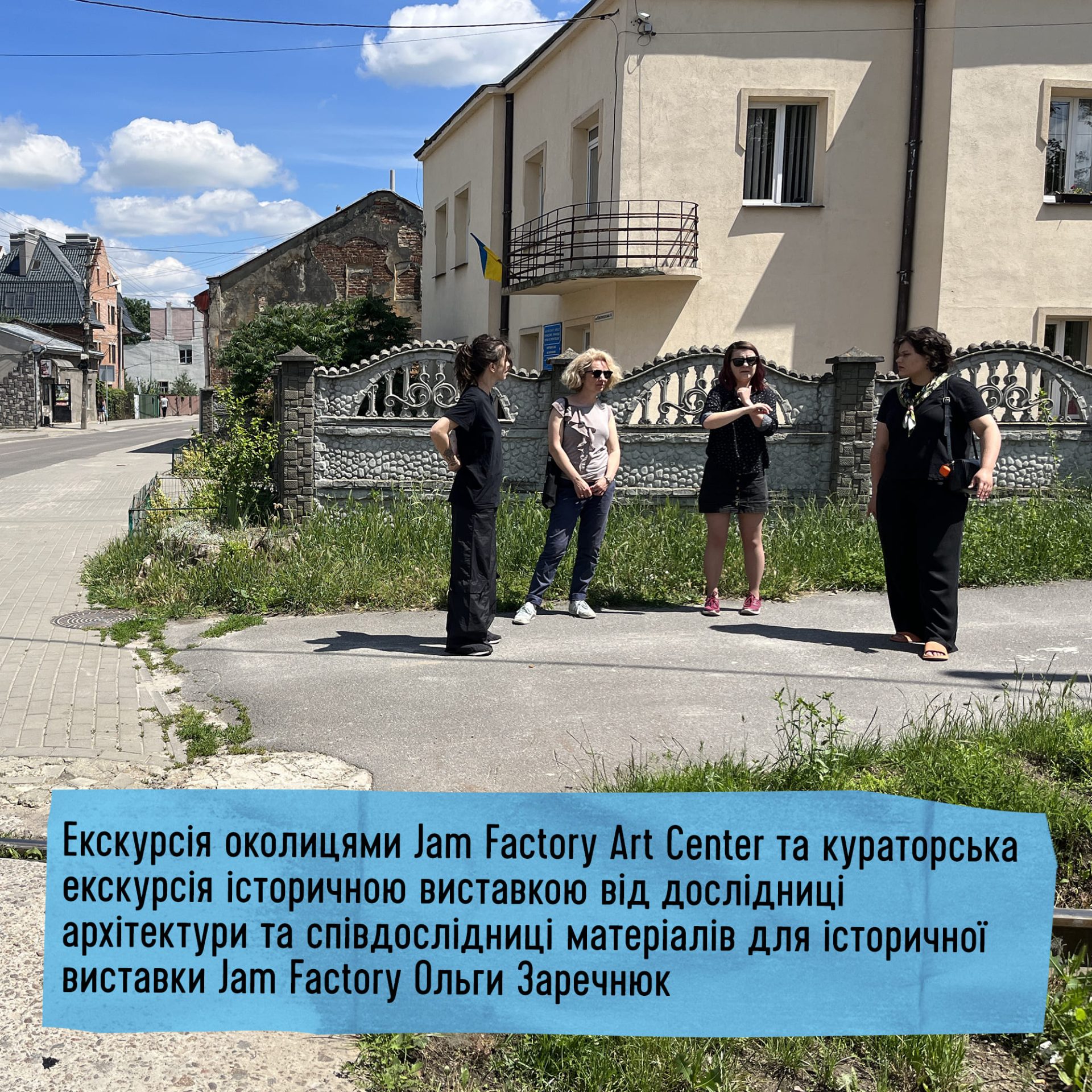The background
The Ukrainian history of the previous 3-4 generations highlights the reasons for the broken mechanisms of memory preservation in Ukrainian families – Soviet collectivization and other economic, political, ideological and ethnic repressions, the Holodomor, the Second World War and the current russian war in Ukraine. Like then, people are forced to move to other places of residence, breaking away from their roots and taking only the necessary things with them. The most important thing. Light-heavy things are filled with emotions or functions. Those who speak now from our past. And our parents’. And (great-)grandparents’. It is fortunate if something memorable has been preserved. But what about the lost things? Where is the memory of them kept? Some of it is in our memories, in our movements, actions. In our attention. And also in our relatives. Who remembers in our families? And ultimately, how can we be carriers of family memory?
The art and community-oriented program “Who Keeps The Memory” aimed to work on the theme of family memory and its preservation within the family and ways of passing memories from generation to generation. Through participatory artistic and non-artistic practices, all those present encouraged each other to research their own family stories and tell and preserve them.
For three weeks we listened to ourselves and others, immersing ourselves in the topic of family memory. We collected ways to share family stories and found new ones. We looked for different forms to document our experience and filled the room’s space with our “work in progress”.
Community of Pidzamche
For the Jam Factory good neighborliness and participatory practices remain important aspects of the activity, so this year’s residence once again became a platform for dialogue with the residents of Pidzamche and for new acquaintances with those who have recently settled in the area. In this residency, we continued research on the role of art during the war and forms of inclusiveness in art and community-oriented projects. The people who agreed to participate in the “Who Keeps The Memory” program through an open announcement are residents of the Pidzamche district, which is currently undergoing revitalization, so the area is changing rapidly. The population of the Pidzamche district, as the whole of Lviv, underwent significant changes due to the full-scale russian war in Ukraine – many families came to Lviv from affected areas. Despite the war, the newly opened contemporary art center Jam Factory is becoming a magnet for people interested in contemporary theater, visual arts, music and co-creation.
Residents
Asia Tsisar is a Ukrainian curator, writer and researcher specializing in the region of Central and Eastern Europe. Having received an education in cultural studies (Kharkiv State Academy of Culture, Ukraine) and East European studies (Warsaw University, Poland), she develops her practice at the intersection of art, cultural studies and political history. In her work, she uses the methods of artistic research and creative storytelling, works with archives, memory and analysis of narratives. Since 2014, she has been supervising visual art projects related to sensitive points in the history and memory of local communities in Ukraine, Belarus, Poland and Germany. In 2020-2022, she collaborated with the Katarzyna Kozyra Foundation and curated the Secondary Archive project – a platform for female artists from Central and Eastern Europe. Since 2022, she has been working on a nomadic art study “Children of Summer”, during which she became a nomad for two years, traveling the peripheries of Eastern Europe to collect local perspectives and complex identities in the region, as well as in search of stories that reveal unobvious connections between cultures and countries of the region. Now she lives in Ukraine and works on a collection of essays devoted to these travels.
Olha Marusyn is an artist from the village of Lanchyn, Ivano-Frankivsk region, she has been living in Lviv since she was 6 years old. Her interdisciplinary practice combines choreography, performance, video, and work with text. The main medium of the artist is her own body, which often continues in the environment. Marusyn was a member of the performative group Abstract Finger (not pointing at anything), co-founder and active resident of the soma.workshop initiative. Through her own body and habits, as well as their reevaluation, she tries to understand the time in which she lives and touches on issues of the past and the future. During the full-scale war the artist began working on the project “Exercises around the Void”, the material from which she shared with the participants of the residency and developed together with the community.
Liubomyr Tymkiv born in Lviv in 1975. He graduated from the Lviv College of Decorative and Applied Arts named after I. Trush, department of artistic wood processing. He graduated from the Lviv Academy of Arts, department of restoration, as well as postgraduate studies at the department of art history. Liubomyr is a veteran of russian war in Ukraine. The practice of the artist, poet and art critic-researcher of Ukrainian ancient sacred art finds its place outside the institutional framework and, literally, outside the physical environment: in the Internet environment in the form of strange and witty blogs/virtual exhibitions and through constant correspondence with artists and non-artists from all over the world, each visual message of which is slightly modified after the delicate and not necessarily noticeable “intervention” of drawings, inscriptions or applications by Tymkiv himself. These two directions are combined in the third brainchild of the artist – garage galleries right in the yard of his own house. It is there, in the heart of the suburb, on the outskirts of Lviv, that Tymkiv occasionally exhibits postcards, graphics and “zines” of his foreign visa-a-vi, as well as shoots videos for his virtual projects. At the meetings of the “Who Keeps The Memory” program Liubomyr touched on the topic of pleasant memories by creating collages, postcards, self-made books, using photos, stickers and stamps.
Program and Process
The research
The introduction of the artists to the theme of the residence and each other began online in May, and already in June with the Jam Factory team they came to Lviv for a research visit. It was a rich and important week, during which immersion in the topic of memory and family archives was facilitated by meetings and workshops with a circle of experts, as well as getting to know each other’s artistic practices. In particular, a visit to the Soma workshop, co-founded by Olha Marusyn, and to the Museum of Mail Art and the Timutopiapress gallery, founded by Liubomyr Tymkiv, rediscovered the artistic experiences of the residents for all of us.
The teams of the Center for Urban History shared their expertise and approaches in working with memory with us, talking about the creation of private collections, amateur cinema and home photo albums; the City Museum shared their approaches to participatory practices and work in public spaces of the city; The Museum of Terror, who introduced their approach to creating a museum exposition on the memory of tragic events and mass displacements and their research work on the accidentally found archive of the Rosenthal family and the #nepochuti project.
Artist Lia Dostlieva held a workshop discussion on approaches to working with other people’s family photo archives. She presented her and Andrii Dostliev’s artistic practices related to the residency theme.
We visited Olha Stavnykovych’s studio of neurodiverse artists and talked about ways to cooperate with their community – artists and their parents and guardians.
For the first time, we invited the City Museum coordinator, art critic and curator Svitlana Tymkiv for expert support and consultation of the art and community-oriented residency.
Activities with the community
The program of activities with the community consisted of regular meetings for three weeks. Although at the development stage, together with residents, we used joint programming of the “Who Keeps The Memory” structure, during implementation, the process turned out to be partly multidisciplinary and mostly included separate blocks from each artist.
The meeting with the community began with Asia Tsisar’s workshop “Mapping Your Home” – an exercise in marking one’s own history and the history of one’s family on maps. With the help of simple questions, a couple of printed maps and colored markers, the community tried to explore their family history through geography and find their own, family-based place to call home.
Later, at the meetings of the participants with Asia, the card game “Who Keeps The Memory” was jointly developed. The game’s questions encourage players to recall moments from their childhood, to share their perception of family traditions, and often for the first time – to pay attention and rethink facts that were previously taken for granted.
Meetings with Liubomyr Tymkiv immersed into the world of making craft postcards with elements of old family photos from the participants’ archives. In this way, Liubomyr offered the community to depict the connections between generations of the family and introduced other methods of preserving family memory, in particular through mail art. During Liubomyr’s subsequent participatory practices, the community created joint comics about their fond childhood memories, using stamps from the artist’s unique collections. Based on postcards and comics of the participants, Liubomyr created a zine, a self-made book – a kind of documentation of memorable moments of the residence and at the same time an “album of friends”.
Olha Marusyn’s practices during the residency were called “Movement around an object to which there is no access” and further developed her project “Exercises around the Void”. First, the participants composed texts about certain things or objects that they have lost or are currently unable to obtain. The artist offered to write texts according to the rules of describing artifacts in the museum. And although these rules provide for dry descriptions of the appearance and functions of things, some of the written texts of the participants are more like literary works, small inspired stories. The essence of the practice was to pay attention and, as the artist Olha explains, to “entertain” with movement (in Ukrainian, one of the meanings of the word is to consider comprehensively, to weigh, to entertain) these lost things and to find a place in the body in which the memory about things, the “entertainment” could last for some time. Next, the sequence of movements about the object performed by the participants was recorded on video and edited into the video performance – the documentation “Exercises around the void”. Thus, through simple movements, shared bodily practice demonstrated to others the memory of various community-important artifacts “placed” in one’s own body.
The distinctive feature of our art and community-oriented programs is that we do not always know at the beginning what will be born in the process, because the process is the greatest value. At the same time, something is always born along the way. In Who Keeps The Memory, we created the following together:
- card game “Who Keeps The Memory”, created by the Pidzamche community
- the film documentation of physical movement practices of the community “Exercises around the Void”
- a unique series of postage stamps
- an exhibition-installation of mapped places of memory and places of the imagined future formed jointly by residents and the community, a collection of mail art postcards and collages, jointly created comics
- community festival, “Who Keeps The Memory In Our Families”, held together with partners and various communities of the city
- moderated “joint programming” and “professional dreaming” about the future together with Open Place artists Yuliia Kosterieva and Yurii Kruchak, NGO “Insha Osvita” and the Jam Factory Art Center team
impulses that we gave each other, and which will be translated into something more.
Thinking about impulses, I remember the words of Yevheniia Nesterovych “So, perhaps the result of participatory practices should be considered not ready-made art projects, as is usually the case at residencies, and not even developed methodologies (because they exist, but they work differently every time), but built circles of connections that can echo and support in the long run those who lived together in a rich joint creative work, a shared experience that is difficult to describe to those who have not been in it. (Yevheniia Nesterovych “Interaction as the basis of everything”.)
We really often lack words to describe the new experiences we got in the shared process. In particular, this is because the transformations that happened with the participants continue for months or even years. One of the community representatives shares his observation “This is a completely another view on that, how we work with memories and our memory. These new proposed approaches make the toolkit wider and one can go on with it, which is very useful, and one may use it outside of the program [Who Keeps The Memory] as many times as one wants.” (Yarema).
The festival
The community festival “Who Keeps The Memory In Our Families” became the final event of the art and community-oriented residency. The idea and format of the festival arose organically in the process of cooperation with this year’s partners of the residence – the Center of Urban History and the City Museum – and once again emphasized the importance and value of “open source programming”, according to the words of Open Place artist Yurii Kruchak. In this programming, there is space for changes initiated by different participants in the process, there is freedom to have or not to have a final result, such as an exhibition or a presentation. In short, there is a defined starting point and direction, but what will be the place of arrival, where we will all come together, will show the process itself, since it is formed under the influence, according to the wishes and needs of those who go together.
The festival of the community “Who Keeps The Memory In Our Families” expanded the circle of participants and became a meeting place of various communities of the city of Lviv. Moreover, thanks to the dynamic exhibition of objects created by the Pidzamche community and the implementation of the same practices by the residents of Asia and Liubomyr at the community festival, all visitors turned into co-authors of the exposition. Therefore, it was possible to add newly created mail art postcards or maps to the general exhibition.
Obviously, “festival” is not the format and word that we use during the full-scale russian war in Ukraine. However, a community festival is a demonstration and celebration of ways of being with others; it is a place of telling family or personal stories to a wider circle, where they listen and hear, accept; these are fragile moments of openness and remembering, sharing and remembering within families. And this is an opportunity to transfer knowledge and memory with the help of artistic practices to the next generations, which is a good prevention of social amnesia.
Participants of the project
Andrii Holdaiev
Yuliia Senyshyn-Kmet
Ilarion Hryneiko
Iryna Yurchenko
Nataliia Ivanova
Tetiana Kovalska
Yarema Piiets
Nadiia Velychko
Oleksandra Kallerman
Olha Kis
Olha Hladun
Nataliia Todchuk
Mariia Shvets
Nataliia Parshchyk
Svitlana Tymkiv
MagiC Carpets
The Jam Factory Art Center implements the program as part of the Magic Carpets platform.
“MagiC Carpets” is an international art platform created in 2017 that gives evolving artists and curators an opportunity to start their own “magical trip” by collecting local stories all around Europe and telling them in other countries through their art. The project is co-financed by the EU Program “Creative Europe”.
Jam Factory Art Center became a member of “MagiC Carpets” in January 2020.
For further information, visit this page.
Art Center Team
Program and Executive Director: Bozhena Pelenska
Operational and Executive Director: Tetiana Fedoruk
Program Curator: Anna Gaidai
Program Manager: Sofiia Korotkevych
Communications: Lesia Dunets, Yuliana Chorna
Financial Support: Rymma Hladka, Nataliia Pidtserkovna
Design: Katya Drozd
Photo: Ira Sereda
Program Team

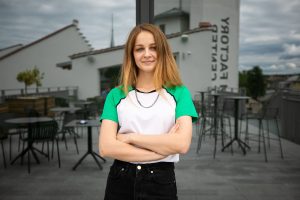



Partners
